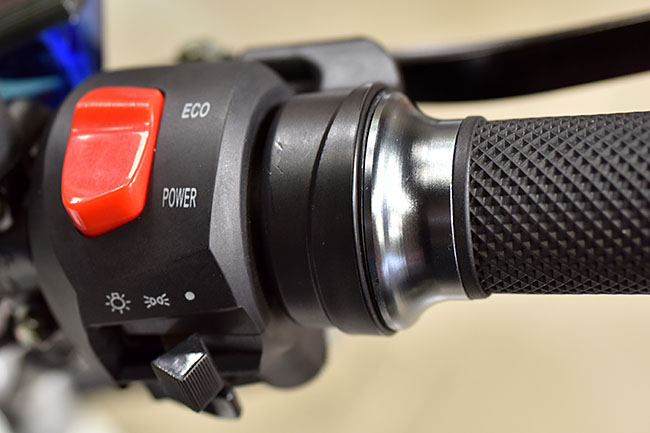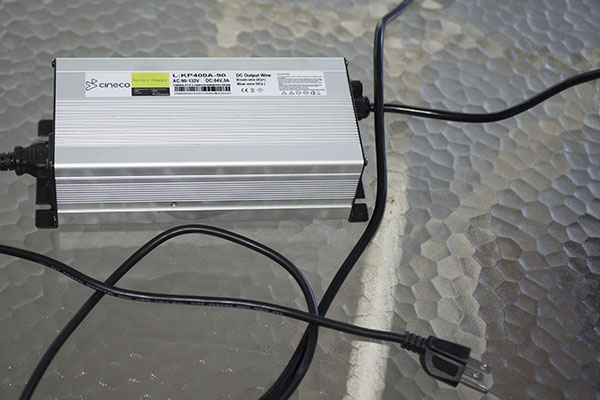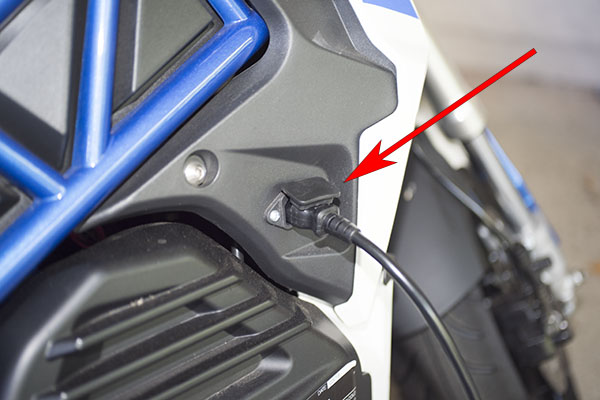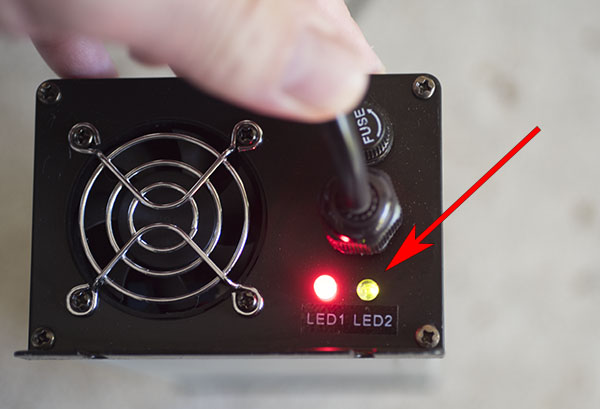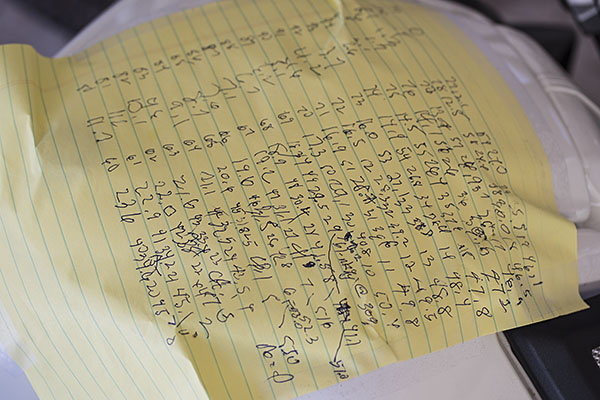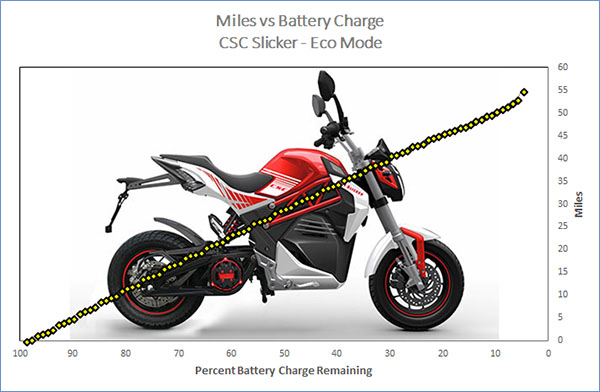I like to read the ExhaustNotes blog. In the aerospace industry, if you liked what your team created too much, we called it drinking your own bath water. The risk in drinking your own bath water was that you lost sight of what was important to the customer and you stopped reviewing your work objectively. Anyway, every once in a while I’ll read through the blog to see what looks good and what we could maybe do better. And in doing that I realized that old Arjiu and I hadn’t done a dream bike piece recently.
That brings us to today and the dream bike bit du jour: The Ideal Electric Motorcycle. I’m going to define the specs for what I think would be a riotously successful electric motorcycle. Bear with me…I think this is going to be good, which can sometimes happen even with bath water.
I guess the first order of business is to consider the current crop of ebikes’ weaknesses. That’s easy. Limited range, limited top speed, long recharge times, clunky and bulky external chargers (for some bikes), and the biggest one of all (at least to me): A near complete lack of cool. Yeah, I’m defining the specs for an ebike that would do well in the US, and the lack of cool is a very big deal. We have to address that. It’s a serious shortfall in all the ebikes I’ve seen. I mean, nobody visualizes themselves as Steve McQueen jumping a fence in Nazi Germany on an ebike. Nobody thinks of themselves as Peter Fonda kickstarting a silent ebike to take Nancy Sinatra for a ride.
Remember that old Harley ad? The one that showed a toddler in a Harley T-shirt with the this question at the bottom: When did it start for you? That ad says it all. I know for me, and I suspect for nearly all of you, our fascination with motorcycles originated when we were wee ones and we saw a motorcycle that stopped us in our Buster Brown tracks. You know what I’m talking about. A bike that made us just stop and stare, usually for a long period of time. I have two such recollections: One was a 1950’s era Harley Duo-Glide dresser (with a monstrous V-twin engine, corrugated exhaust headers, and drop-dead-deep-gorgeous paint); the other was a ’64 500cc Triumph twin (white with gold accents, pea-shooter mufflers, Triumph’s “parcel grid” on the gas tank, a matching tach and speedo, and those magnificent, sweeping exhaust headers). Yeah, those bikes defined cool. They were visually arresting things. None of the ebikes currently on the market do that for me. Like my old platoon sergeant used to say, this is something we need to talk about.

Okay, enough reminiscing. Let’s get to the specs. The way I see it, we need to address weight, size, top end, range, recharging, cost, comfort, and the cool factor. Here we go, boys and girls…
Let’s hit the elephant in the room first, and that’s the range issue. We need more. Nobody has a motorcycle with decent range. The City Slicker, under best case conditions (I’m talking low speeds and summer temperatures) can do about 60 miles, maybe a scosh more, and obtaining the last few miles involves really low speeds and lots of prayer. Zero claims much greater range, but every magazine that’s tested the Zero shoots those claims down with a heartfelt dismissal that goes along the lines of “in your dreams, Zero.” Nope, the range on the current crop of ebikes just isn’t where it needs to be yet. Where is that? Hey, I’m writing the spec. I’d say 250 miles. Put an ebike out there that can go an honest 250 miles at normal speeds, and I’m in. I think that should be doable at a reasonable price (I’ll say more on that in a bit). Yeah, a 250-mile range would make an ebike viable for me.

Next up: Recharging. Look, the bottom line is I don’t want to wait 8 hours to recharge a bike. As long as I’m writing the spec and dreaming out loud, I’d like to see a sub-30-minute recharge time. When I stop at a gas station, it’s about 10 minutes to pull up to the pump, put the bike on the sidestand, get off, take off my gloves, unlock the fuel cap, get out my wallet, put the credit card in the gas pump, enter my zip code, pick the octane level I want, take the nozzle out of the pump, peel back the nozzle’s foreskin so the fuel will flow (hey, we live in Kalifornia), put fuel in the tank, and then reverse the process. Add another rider or maybe another ten riders (if I’m on one of my Baja tours and I’m being my usual hardass self about not wasting time), and a fuel stop grows to maybe 30 minutes. I’m used to that, and that’s what I want in an ebike: Quick replenishment. That’s beyond the current state of the art, but don’t tell me we can’t do it. The solution is obvious: We need to change the state of the art.
On the recharger, I want it built into the bike, with a simple cord that pulls out of the bike to plug in someplace (kind of like you get on a vacuum cleaner). Give me a 15-foot cord and I’m good to go. I don’t want to screw around with an external power converter, because then I’d have to find a place to carry it on the bike. Build that thing into the motorcycle. Zero has the right idea on this one.
I think an 85-mph top speed is good. I know, I know…maybe you’re one of those guys: Ah need at least a 1000cc and Ah need to go at least a hunnert else they’ll run me down on the freeway. If that’s you, don’t waste any more time here; go back to posting stupid stuff on Facebook and the other forums. Here’s the deal: I’ve been riding for a few years, and the times I’ve needed to go above 85 mph are few and far between. In fact, I’ve never actually “needed” to go over 85. Adding top end takes a big bite out of an ebike. I’m willing to give up stupid top end to get more range, shorter recharge times, and less weight. So, 85 mph it is. Give me that in an ebike and I’m a happy camper.
I want a reasonable amount of stowage space so I can do Baja without bungee cords. Some folks look like they’re moving when they go on an overnight motorcycle trip. I’ve ridden with those guys. They and their bikes are like the opening Beverly Hillbillies scene with Granny on top of the pickup truck (not that’s there’s anything wrong with being a hillbilly, or a Granny, for that matter). The City Slicker has a cool stowage compartment where the fuel tank would be on a gas bike. Something like that would work just fine for me. I don’t need to change my underwear every day on a motorcycle trip.
The ideal motorcycle (not just an ebike, but any motorcycle, in my opinion) should have a seat height no higher than 30 inches, a weight of 400 lbs or less, and physical dimensions that allow for easy u-turns on two-lane roads. None of this 36-inch seat height, 800-lb silliness. The ergonomics should be straight standard motorcycle, too. No Ricky Racer, stupidly-low-clip-on, first-two-years-of-chiropractor-visits-are-free seating positions. And while I’m on doctor references, no gynecological-exam, silly-ass cruiser seating positions, either. If the designers of my ideal ebike could just get a 2006 KLR 650 and duplicate its handlebar/seat/footpeg relationship, that would be fine. My KLR had the best seating position of any motorcycle I’ve ever owned.
I’d vote for 17-inch rear and 19-inch front wheels because that combo just flat seems to work for damn near everything. I won’t be jumping any logs with my ideal ebike or trying to fly across soft sand, and that eliminates the need for a 21-inch front wheel. And everybody has all kinds of tire combos for the 17/19 setup. To borrow a phrase, why re-invent the wheel?
I want a plug-and-play bike with BITE. Not as in “bite me,” but as in built-in-test-equipment (like the aerospace industry uses). That would completely eliminate the need for a dealer (come to think of it, it would also eliminate the need for a shop manual). No obscene, inflated dealer freight and setup fees. Nope, I want factory direct. And if anything goes wrong with the bike, it shows me which module I need to remove and replace. Plug and play. I don’t feel the need to fund an on-the-job-training program for a dealer-based, wannabe motorcycle mechanic. BITE me, baby.
I think the cost of such a bike should be about $7,500. That feels about right for what a motorcycle should cost. Yeah, I know, you probably couldn’t build it for that in America. Maybe India? Or China? Or maybe you could make it in America. Source the subassemblies wherever you need to, keep the UAW and IAM snouts out of the trough, and assemble the bikes here. Create 30 to 50 US jobs at an assembly plant, preferably in Texas or New Mexico. This is doable, folks. Trust me on this. I used to run manufacturing facilities before I moved up to blogging. We can do this.
So there you have it. Do all of the above, and folks would beat a digital path to your online direct sales website. Yep, all of the above, at $7,500. That’s the ticket.
Oh, and one last must have: Electric start. Peter and Nancy (and the rest of the Wild Angels cast), my apologies in advance, but no kickers on my ideal electric bike. I know they’re cool, but this is the 21st Century.
Want to read more of our ebike stuff? Hey, just click here! It’s our new index page with all the good ebike articles we’ve done here on the blog.
More good stuff. It seems the Chairman of the Southern California Motorcycle Association, my new good buddy Gonzo, is a big fan of the ExhaustNotes.us site. We had a nice conversation yesterday, and Gonzo told me he particularly liked our story on the Jack Daniel’s visit (so much so they are running it in their newsletter this month) and our first intro piece on the 2005 Three Flags Classic.

One thing led to another…I’ve been invited to the 2019 Three Flags Classic (boy oh boy, I’m really thinking about that one), and I became an SCMA member. You should be, too, even if you’re not living here in the Southland because SCMA’s events are international in reach. You can join right here.
And one last thing: Want to win a free copy of one of our moto adventure books? You can get in on the drawing if you sign up for automatic email blog updates (the widget is in the upper right corner if you’re on a laptop, and below this article if you read the blog on a phone). We’ll never share your email with anyone else!

